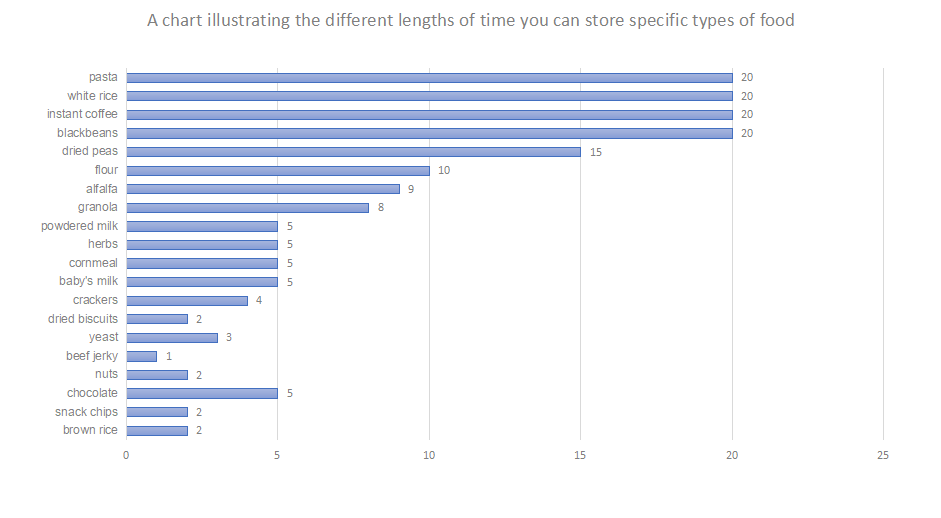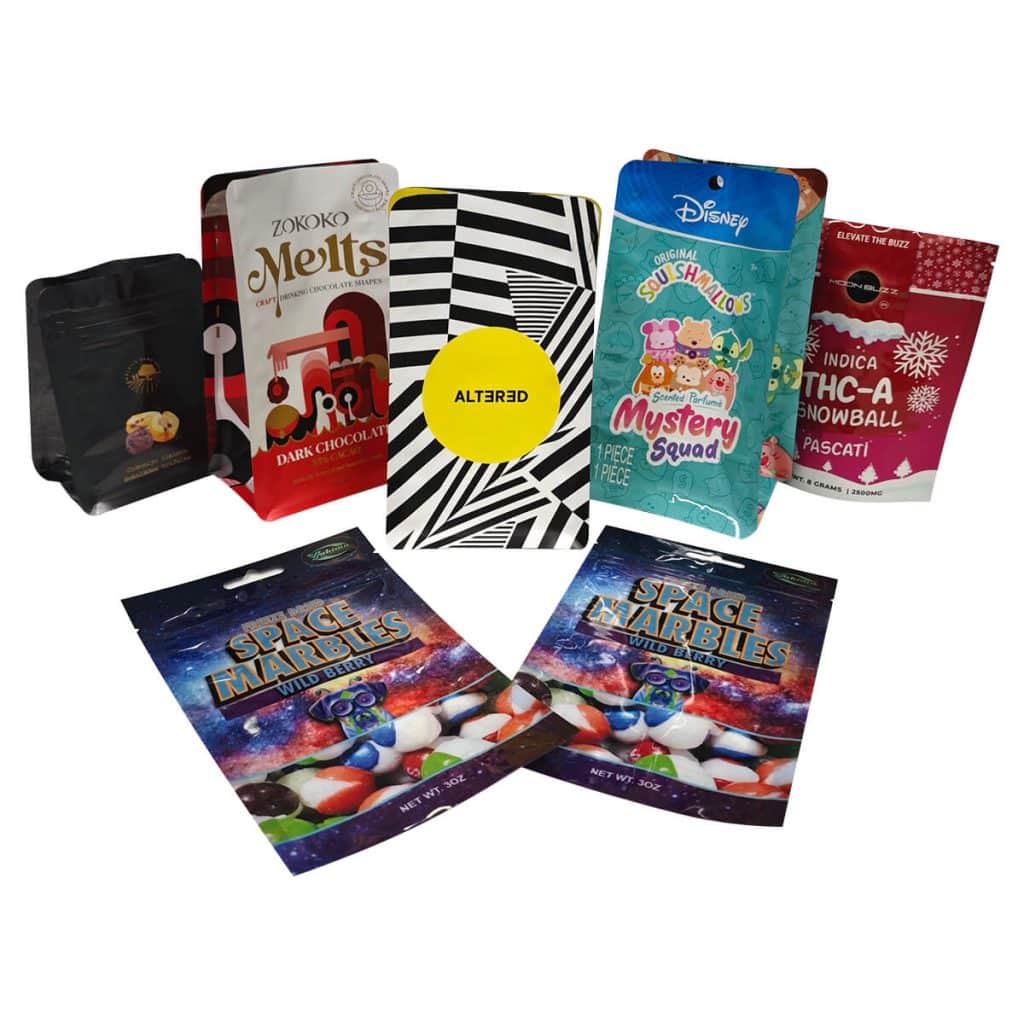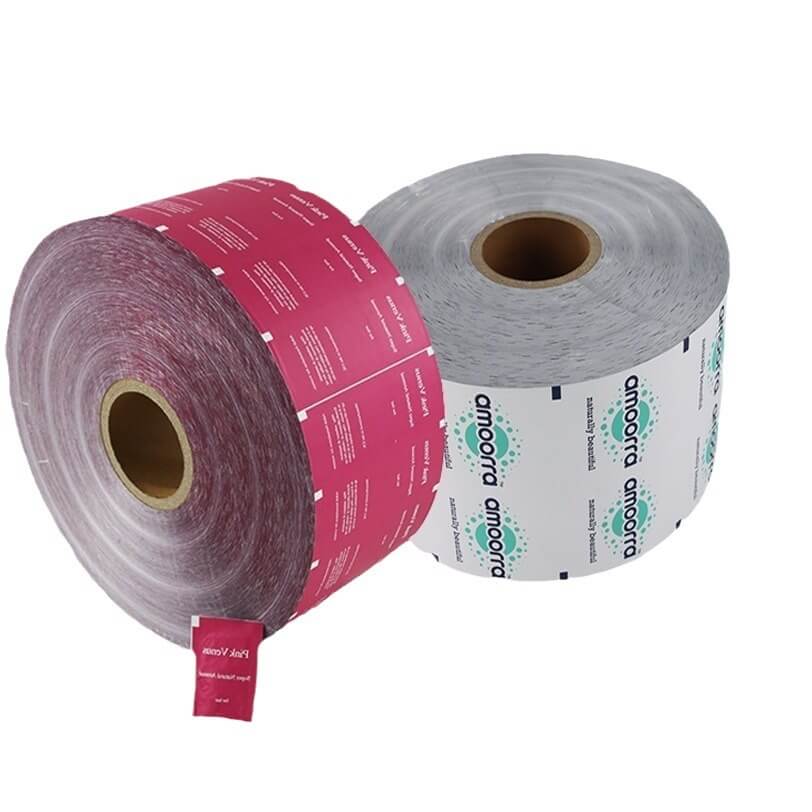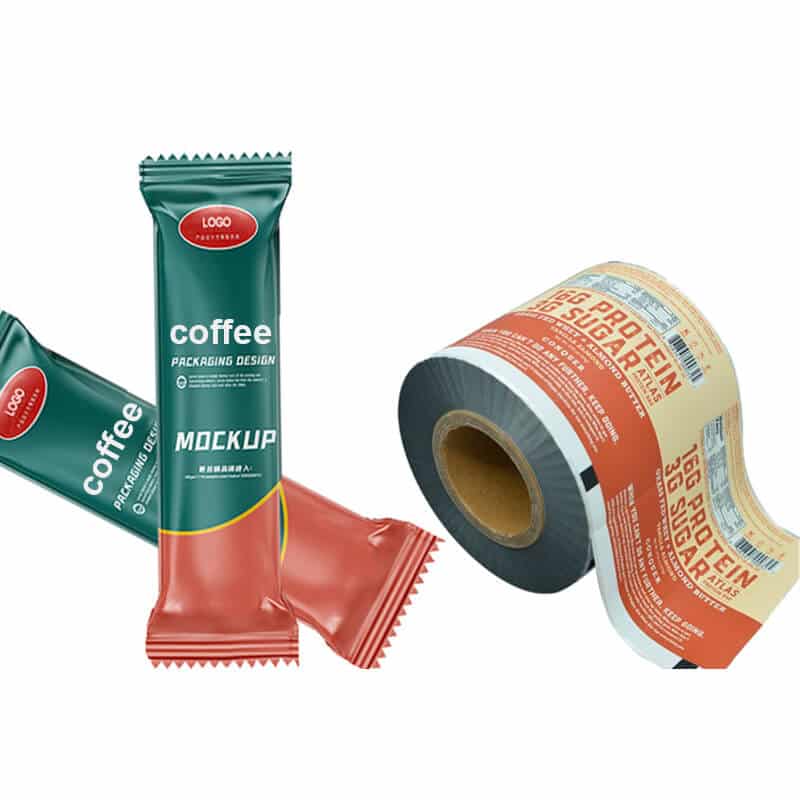Packaging bags in people’s lives, the production of a wide range of applications, mylar bag been widely used since the birth of the production of bags, many food products are also utilized mylar bags to store.
Under certain conditions, mylar bags can preserve food for a long time, but there are several factors that can affect the shelf life.
There are several factors, mainly physical, chemical, and microbiological.
Physical factors include the packaging material of the food, whether the food is crushed and collided during transportation, especially some fresh food, and the temperature and light of the food.
Chemical factors are mainly the influence of different components in the food, moisture content of the food is relatively easy to deteriorate.
Microorganisms significantly impact food spoilage; microorganisms cause most food spoilage; if you want to extend the shelf life of food, the main thing is to prevent food spoilage caused by microorganisms.
To summarize, the main thing is the food itself, followed by the packaging and preservatives.
But mylar bag is still the most popular food packaging bag, loved by many people.

How long can food be kept fresh in mylar bags
mylar bag can store the food time is not fixed; each food, due to the characteristics of its shelf life, has a long and short, maybe a few months, long perhaps 25 years.
The following chart is a good illustration of the shelf life of different foods in a mylar bag.

How long can the flour be kept in a mylar bag?
Ideally, it is usually assumed that flour can be stored for up to 20 years, but generally, the mylar bags we use are made of metal components that are light and moisture resistant.
With the addition of oxygen absorbers, you can store flour for up to 10-15 years.
What is the shelf life of flour?
The bags of flour we buy in supermarkets are usually marked with a best-before date of one or three years. Achieving this celebrated shelf life requires a dry and suitable storage temperature of 18℃-24℃ and air circulation.
White flour usually retains its quality at room temperature for 6 to 12 months, while whole wheat flour can be stored for 1 to 3 months from purchase, which also requires sufficient oxygen and room temperature.
How to store flour for a long time The best way to keep flour
Sealed containers
Storing flour in airtight containers is standard, but glass or metal containers or durable plastic can also be used. These containers are more rigid and resistant to insects, moisture, etc.
Keeping these containers in a cool, dry place can preserve flour for up to 2 years.
Vacuum Sealing
Vacuum sealing is commonly used for refrigerated and frozen foods, and storing flour under a vacuum can extend the shelf life by 2-3 years.
You can store flour in vacuum-sealed bags and then place the bags in plastic tubs or glass containers to protect them from bugs and rodents.
Refrigerator
Putting the flour in the refrigerator can effectively extend the shelf life of the flour, which is generally considered up to 2 years. Freeze the flour for 100 hours to help kill any weevil eggs that are lurking in the flour.
Before you can use the flour, you need to bring it to room temperature. Please remove it from the refrigerator and let it come to room temperature before using it. If your flour has become soggy, you can spread it out on a baking sheet and heat it in the oven to restore the flour to its normal dry state.
Mylar bag with an oxygen absorber
The best way to store flour or any dry food material for a long time is a mylar bag with an oxygen absorber
. Mylar bags are metallic components that provide light, moisture blocking, and moisture barrier. They prevent moisture and sunlight from entering the flour.
And the oxygen absorber will absorb any oxygen present in the bag. This prevents the hatching or growth of insect eggs.
However, if we are in a rodent-infested area, we can store our flour better by placing the mylar bag in a hard plastic bucket with a lid.
Why does the flour spoil
- Flour gets damp. When storing flour, it is necessary to put it in a dry and ventilated place. When the flour is wet, the flour will become sour.
- Flour is past its shelf life. When the shelf life is over, flour deterioration will also lead to the phenomenon of sourness.
Three 、The appearance of harmful bacteria. Yeast in large numbers is easy to produce acid bacteria; the formation of acid bacteria will make the flour sour. - Insect invasion. Insects like to inhabit the flour, especially fruit flies. They can quickly burrow into open containers and bags, lay eggs in the flour, reproduce and spread more bugs in the flour
Does flour expire?
Flour purchased and stored in its original packaging will last approximately six months, as indicated by the expiration date of the general packaging.
The flour will not be stored indefinitely, whether wheat, white, bleached, or unbleached.
Please use it promptly to ensure it has the best flavor and provides the proper texture for your baked goods.
The shelf life of flour can be extended appropriately if you choose the proper storage method.
Why choose a polyester thin with an oxygen absorber?
The mylar bag with oxygen absorber can protect your flour for up to 10+ years and is one of the best choices.
The mylar bag protects your food from oxygen, moisture contamination, and light penetration.
The mylar bag offers many advantages.
- Easy to use
- Flexible
- airtight
- Cheap
- Non-porous
- Puncture resistant
- Reflects light
How long can oats be stored in a mylar bag?
Oatmeal can be stored in a mylar bag with a suitable oxygen absorber and in a climate-controlled place for more than 20 years.
Oats are best stored in an airtight container in a cool, dark place in your home. Refrigerators, freezers, or pantries are the best places to store oats.
Sealed storage options include glass or plastic containers, vacuum-sealed containers, cans, mylar bags, and food-grade buckets.
How long does sugar keep in mylar?
White sugar has a permanent shelf life and will never spoil. However, if exposed to moisture, sugar will turn into hard lumps.
White sugar needs to be stored in an airtight container, either in glass jars or sealed food-grade plastic containers.
Brown sugar should be stored in an airtight container. It will last at least one year.
Confectionary sugar should be stored in an airtight container. It will last for at least 18 months.
Granulated sugar should be placed in plastic bags that will last for at least two years.
How long can beans be stored in mylar?
If beans are stored in food-grade packaging, sealed drums, oxygen-reduced packaging, or heavier plastic (Mylar) bags, they will last ten years or more.
Properly packaged and stored, dry beans can last 25 to 30 years.
How long does pasta last in a mylar bag?
Dried pasta can be stored for a long time if packed in a container with an oxygen absorber and vacuum sealed. It can be stored in a mylar bag for more than 20 to 30 years.
Pasta is easily crushed, so it is best to protect the bag in a bucket. Pasta is exceptionally well and tightly packed in mylar.
How long can rice be stored in mylar?
For long-term rice storage, thirty years or more, use mylar bags in combination with an oxygen absorber.
Polyester film and oxygen absorber can protect dry goods from light, oxygen, and moisture, which makes rice can be stored for a longer time.
How long can milk powder be stored in a mylar bag?
For long-term storage, the best way to store dry milk is to put it in a sealed mylar bag with an oxygen absorber and desiccant. Dry low-fat milk stored in this manner can be stored for more than 15 years.
According to the USDA, milk powder can be stored indefinitely. After the printed “best before” date, unopened packages can still be used for 2 to 10 years.
To store milk powder in mylar bags, add a desiccant to the bottom of the bag and an oxygen absorber to the top of the bag before sealing. Dry low-fat milk stored in this way can last up to 15 years.
What makes mylar bags suitable for storage?
These bags are robust and easy to seal with vacuum sealers, irons, or straight irons. Low oxygen transmission rate: mylar bag films offer three layers of protection.
Due to their thick foil laminate, they also have a meager oxygen transmission rate (OTR).
Mylar bags provide adequate protection against light, moisture, and insects. They create a sound oxygen barrier that removes oxygen and extends the shelf life of the food.
Why use mylar bag for food storage

Mylar bag films offer a meager oxygen transmission rate (OTR) thanks to their thick foil laminate. It provides three layers of protection against moisture, light, and odors.
Polyester film is highly flexible and thin but also very strong and durable.
It is puncture resistant* and easy to use. The opaqueness of the bag will also preserve the nutritional content of the food.
The mylar bag can hold large amounts of food for long-term storage without fear of bag tears and breakage.
The mylar bag will prevent insects from entering the bag
mylar bags are available in various bag sizes and can be custom-sized to fit everyone’s needs.
Summary of mylar bags for food storage
Among the many ways to store food, using mylar bags is undoubtedly the most economical and practical choice due to the many advantages of the mylar bag and the simplicity of its operation.
The use of mylar bags for food storage is also increasing. The quality of mylar bags on the market is not the same, so choosing a manufacturer’s mylar bag is also a way to ensure quality.






